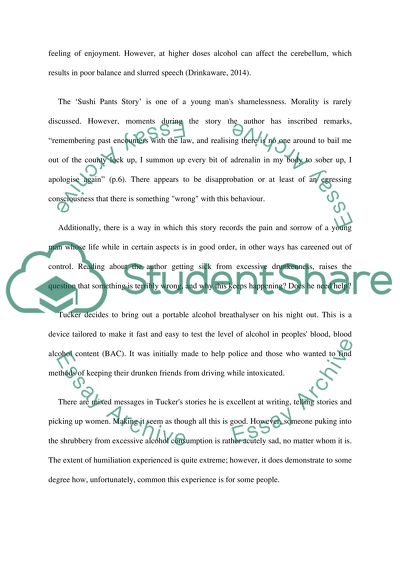Cite this document
(The Impact of Alcohol Book Report/Review Example | Topics and Well Written Essays - 3161 words, n.d.)
The Impact of Alcohol Book Report/Review Example | Topics and Well Written Essays - 3161 words. Retrieved from https://studentshare.org/psychology/1630047-an-analysis-of-the-famous-sushi-pants-story-by-tucker-max
The Impact of Alcohol Book Report/Review Example | Topics and Well Written Essays - 3161 words. Retrieved from https://studentshare.org/psychology/1630047-an-analysis-of-the-famous-sushi-pants-story-by-tucker-max
(The Impact of Alcohol Book Report/Review Example | Topics and Well Written Essays - 3161 Words)
The Impact of Alcohol Book Report/Review Example | Topics and Well Written Essays - 3161 Words. https://studentshare.org/psychology/1630047-an-analysis-of-the-famous-sushi-pants-story-by-tucker-max.
The Impact of Alcohol Book Report/Review Example | Topics and Well Written Essays - 3161 Words. https://studentshare.org/psychology/1630047-an-analysis-of-the-famous-sushi-pants-story-by-tucker-max.
“The Impact of Alcohol Book Report/Review Example | Topics and Well Written Essays - 3161 Words”, n.d. https://studentshare.org/psychology/1630047-an-analysis-of-the-famous-sushi-pants-story-by-tucker-max.


